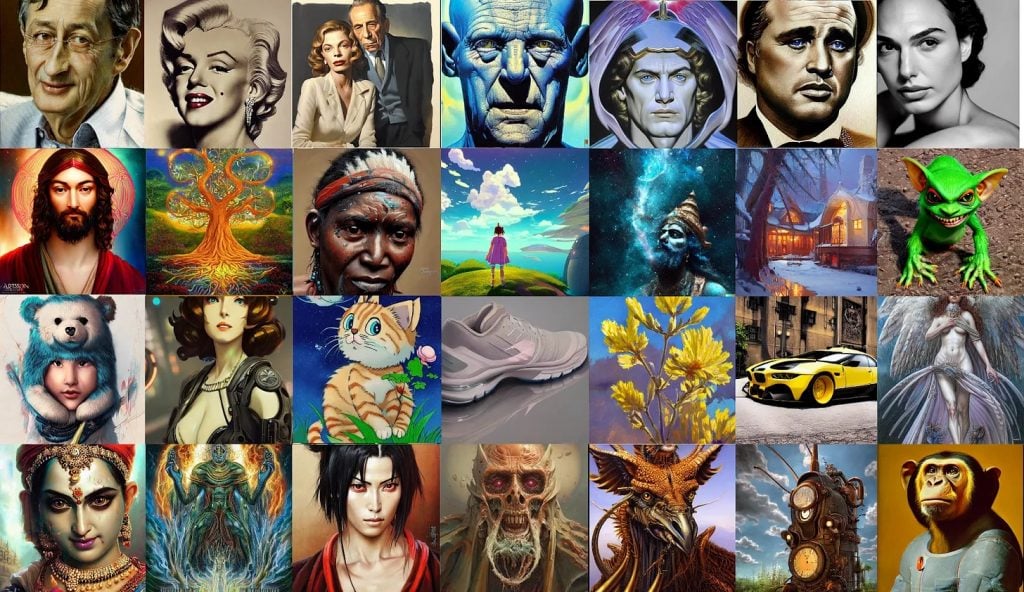Law & Politics
In a Blow for Artists, a Federal Judge Has Sided With Three A.I. Companies in a Copyright Dispute
The class action suit was filed by three artists—Sarah Andersen, Kelly McKernan, and Karla Ortiz.

The class action suit was filed by three artists—Sarah Andersen, Kelly McKernan, and Karla Ortiz.

Adam Schrader

A federal judge on October 30 largely sided with the companies behind the artificial intelligence image generators Midjourney, Stable Diffusion, and Dream Up, dismissing almost all the claims three artists had made against them in perhaps the first major copyright infringement class action lawsuit of its kind.
U.S. District Court Judge William H. Orrick handed the 28-page decision down on a separate motion to dismiss each filed by Midjourney Inc, Stability A.I. Ltd, the company behind Stable Diffusion, and Deviant Art Inc, which had created the image generator Dream Up based on Stable Diffusion, court records show.
The decision is a blow to the three artists who had filed the lawsuit—Sarah Andersen, Kelly McKernan, and Karla Ortiz—but the battle isn’t over.
“On behalf of Joseph Saveri and myself: The order issued yesterday by Judge Orrick is consistent with the views he expressed during the hearing on July 19. Judge Orrick sustained the plaintiffs’ core claim pertaining to direct copyright infringement by Stability A.I., so that claim is now on a path to trial,” said the lawyer for the artists, Matthew Butterick, in an email.
“As is common in a complex case, Judge Orrick granted the plaintiffs permission to amend most of their other claims. We’re confident that we can address the court’s concerns. We will be filing an amended complaint in November. In the meantime, discovery in the case is proceeding.”
The court documents show Orrick has allowed the artists to provide clarity on how each of the three defendants “separately violated their copyrights, removed or altered their copyright management information, or violated their rights of publicity and plausible facts in support.”
He also allowed one count of copyright infringement to move forward against Stability A.I. for allegedly copying the 16 works for which Andersen had registered her copyrights with the U.S. Copyright Office.
The judge made a distinction between works that are copyrighted and works that are not. Though the U.S. Copyright Office considers a copyright to exist “from the moment the work is created,” the agency notes that copyrights have to be registered to bring a lawsuit for alleged infringement.
McKernan owns the copyrights for more than 30 works used in the training data for the A.I. models, while Ortiz owns the copyright for at least 12 works used in training. However, neither artist registered their copyrights prior to filing the lawsuit like Andersen, Orrick said. In oral arguments, their lawyers “clarified that they are not asserting copyright claims on behalf of those two plaintiffs” and so the judge dismissed those claims with prejudice, meaning they cannot be refiled.
Andersen, in the lawsuit, had claimed more than 200 of her copyrighted works were included in an open-source database of billions of images created by machine learning researcher Christoph Schuhmann and collaborators, which all three defendants used to train their programs.
But the defendants told the judge that Andersen should be required to identify specifically which of her art was included in the dataset of images scraped from the internet and used in training Stable Diffusion. Andersen relied on a search of her name at ihavebeentrained.com site to support the plausibility of her belief that her works were used in the training datasets.
“She attests that her review of the output pages from that search confirms that some of her registered works were used as training images. That is a sufficient basis to allow her copyright claims to proceed at this juncture, particularly in light of the nature of this case, i.e., that LAION scraped five billion images to create the training image datasets,” the judge said in his decision.
“At this juncture, the plausible inferences are that all of Andersen’s works that were registered as collections and were online were scraped into the training datasets.”
As to other allegations, the judge agreed that Andersen failed to plausibly allege how DeviantArt, long known as an online arts community, “played an affirmative role in the scraping and using” of works made by Andersen and others.
And he challenged the idea that all images generated by the models are somehow derivative of copyrighted works if not all works in the training data set were registered. He noted that the artists will have to prove “substantial similarity” between a generated work and their image used to train the A.I.
More Trending Stories:
Four ‘Excellently Preserved’ Ancient Roman Swords Have Been Found in the Judean Desert